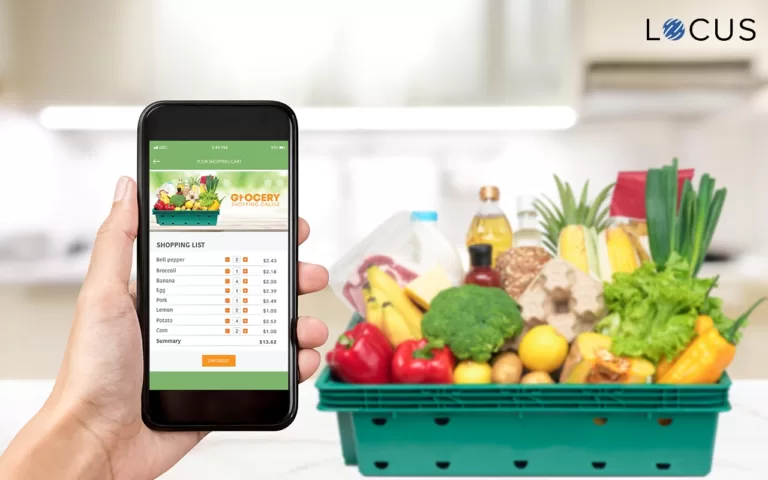Delivery Experience, E-Commerce, Grocery, Healthcare / Pharmaceutical, Last Mile Delivery Optimization, Retail & CPG, Supply Chain Optimization
How to build your business around a on-demand hyperlocal delivery model?
Apr 17, 2020
6 mins read

Most consumers are stuck in their homes due to coronavirus pandemic and thus the demand for essential goods and services has made them turn to on-demand deliveries. Logistics businesses are attempting to build a on-demand hyperlocal delivery business model to fulfill this need.
The COVID-19 outbreak has changed the perception of retailers towards on-demand deliveries. Retailers who are not engaging in on-demand deliveries are suffering huge losses. They are searching for alternate options to sustain their business.
One such option that solves the concern of retailers is hyperlocal on-demand deliveries.
What is a on-demand hyperlocal delivery model?

The on-demand hyperlocal delivery business model connects the local offline business holders to customers through a digital platform. It enables a customer to immediately purchase products or request for services like food, medicine, and consumer goods.
In this delivery model, the logistics provider acquires the requested product from nearby shops and delivers it to the clients. Customers can monitor the entire delivery process in real-time.
Why do logistics providers and consumers prefer on-demand hyperlocal deliveries?
Localities or communities have a desperate need for on-demand services. The on-demand services are hyperlocal in nature, and they cater to immediate needs. The entire transaction in hyperlocal on-demand business gets completed within hours.
The other reason for consumers trusting hyperlocal on-demand deliveries than non-hyperlocal deliveries is the physical presence. The physical presence of stores makes it possible to attend to consumers’ grievances.
Delivery and logistics do not mean the same for hyperlocal and non-hyperlocal businesses. Hyperlocal businesses do not worry about warehousing, long-distance transportation, and other legs of logistics. The last-mile delivery routing is the only logistics that affects hyperlocal businesses. Their business rides on retailers in the locality.
The hyperlocal on-demand businesses operate within a limited area. Hence, reverse logistics is not a big deal for them.
What sort of services fall under the on-demand hyperlocal model?
Hyperlocal on-demand businesses are affordable and convenient for the urban masses.
Here are the services that come under hyperlocal on-demand businesses:
- Personal Homecare services: Beauty, Salon Spa services etc
- Food ordering services
- Handyman services: Plumbing, carpentry, electrician, gardening, etc
- At-Home Healthcare Services: Babycare, senior care, caregiving, etc
- Grocery Delivery services
How to build your business around an on-demand hyperlocal delivery model?
Logistics businesses and investors are eyeing hyperlocal on-demand deliveries as a profitable business. They aim to provide a positive online shopping experience by facilitating customer needs.
Logistics companies that want to set their foot in on-demand hyperlocal deliveries should follow a traditional pattern of launching their business. They should be completely process-driven. Here are the steps they should follow to build an on-demand hyperlocal delivery model of business.
- Select your industry based on its development potential, market size, degree of competition, and so on.
- Select a particular niche in the industry, target market, and your resources
- Identify your target audience and devise a strategy to market your service
- Build a partnership with local businesses and delivery companies
- Plan your revenue flows based on commission from merchant partners and delivery charges from customers
- Finally, find a technology partner or on-demand app development services
How does technology benefits on-demand hyperlocal delivery business models?

Logistics companies entering on-demand hyperlocal businesses want to enhance their customer experience. Technology plays an active role in instilling a positive feeling about the product and improving the user experience.
Here’s how technology can help logistics businesses.
Countering traffic congestion
Consumers may have varying needs from multiple localities. Inter-urban traffic makes hyperlocal deliveries increasingly complex. Efficient planning of routes can reduce the time spent in traffic considerably. Technology makes the complex task of planning inter-urban delivery routes quite simple.
Route planning solutions reduce the cost of dropping packages at customers’ doors. It considerably reduces fuel costs, thereby making your last-mile logistics cost-efficient.
Check Out: The Definitive Guide to Logistics Route Optimization
Bearing the cost of free deliveries
The hyperlocal logistics business gets revenue from two sources— selling commissions from the locality shops and delivery charges from consumers. But, consumers have become extra-sensitive towards additional delivery charges and expect a free shipping cost. Also, they expect flexible delivery options.
Catering to these demands incurs costs in the last-mile delivery. Utilizing automation is the only way to sustain free shipping costs.
97% of organizations say that they will not be able to manage free shipping without reducing the delivery costs through automation.- Capgemini, Last-mile delivery challenge.
Easy to allocate delivery zones
Earlier, logistics companies looked for the availability of delivery agents and then assigned them the tasks manually. But, hyperlocal businesses serve hundreds of localities. Sending drivers to new delivery areas leads to a definite fall in productivity. Hence, it becomes crucial to allocate set delivery zones so that the task of assigning delivery agents becomes easier.
With thousands of orders from multiple localities, it is tough to assign delivery zones manually. A shipment sorting and rider allocation software becomes necessary. It automatically assigns riders and the delivery zones, thereby making the rider allocation process simple and effective.
Keeping the fleet efficient
Maintaining the efficiency and productivity of the fleet are essential for hyperlocal logistics businesses. The rising volume of orders is making it quite challenging for fleet drivers to execute on-time deliveries. The idling costs are high in inter-urban areas. It spikes up fuel consumption and increases maintenance costs, thereby making delivery fleets inefficient.
Technology is the best choice to keep the fleet efficient. Delivery route optimization software reduces idling costs during delivery. It increases the number of active fleets readily available for deliveries and reduces the maintenance time for a fleet. Also, it reduces the time spent by fleet drivers on deliveries, making them busy and efficient.
Managing logistics during peak delivery periods
Peak delivery periods pose the biggest challenge for hyperlocal on-demand delivery businesses. Companies hire more delivery staff to manage the sudden spike in demand caused during peak delivery periods. Beyond the expansion of operational abilities, they need to manage the volume of orders efficiently.
Technology offers the best support in managing logistics during peak delivery times. Logistics optimization and automation software make your job easier during peak delivery periods. It helps you manage multiple drops and complex delivery schedules. Also, it makes your reverse logistics process convenient and cost-efficient.
Conclusion
Success in the logistics business lies in managing and fulfilling customer expectations. Hyperlocal delivery businesses are facing the strain of customers’ expectations of rapid deliveries. Managing these customer expectations for on-demand deliveries becomes an uphill task for logistics companies without the use of technology.

Read More about – Hyperlocal Delivery Markets See a New Dawn in the US During COVID-19.
Related Tags:

E-Commerce
FMCG + eCommerce + Modern Trade Supermarkets = Future of Supply Chain
In these COVID-19 times, it is no surprise that the FMCG sector is in the thick of the action. Across the globe, there is a huge demand for essential commodities ranging from food supplies, diapers, hand sanitizers, and beauty care, among other items. FMCG supply chains are rising to the occasion even with all the […]
Read more
3PL
Software as a Service (SaaS) in the Global Recession of 2020
Will SaaS reshape the future of logistics and supply chain management in the days to come? Despite strict lockdown policies implemented by governments around the world, and the persevering efforts of millions of healthcare workers, Coronavirus is spreading fast and disrupting daily lives enormously. The pandemic has hit the world economy hard and analysts worldwide […]
Read moreMOST POPULAR
EDITOR’S PICKS
SUBSCRIBE TO OUR NEWSLETTER
Stay up to date with the latest marketing, sales, and service tips and news


How to build your business around a on-demand hyperlocal delivery model?